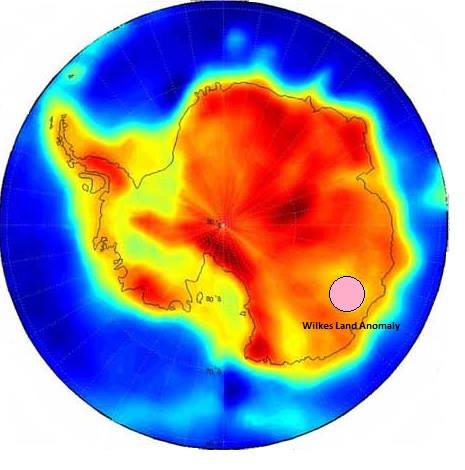
About 66 million years ago at the end of the Cretaceous period an asteroid called Chicxulub (pronounced Cheeksalahb) crashed into what is now Mexico.
The asteroid was 10 to 15 kilometres in diameter (6 to 9 miles) and left a crater over 150 km (93 miles) across. It is generally agreed among scientists that this asteroid was responsible for the extinction event that wiped out the dinosaurs.
But in 2006, NASA satellites, as part of the Gravity Research and Climate Experiment (GRACE) mission, detected gravitational changes in an area of Antarctica which indicated the presence of a huge object sitting in the middle of a 483 km (300 mile) wide impact crater (you can fit the state of Ohio into it).

It is buried under 800 metres of ice and is known as the Wilkes LandGravity Anomaly, centred on north central Wilkes Land in Antarctica.
This impact is much bigger than the one that killed the dinosaurs and we know that about 250 million years ago in the Permian Period of Earth’s history some 90% of marine life and nearly 75% of terrestrial life on Earth was wiped out (the Permian-Triassic extinction – largest extinction event ever).
It is believed that this event may have been caused by the suspected asteroid at the centre of the Wilkes Land crater.
There is even speculation that the impact of this asteroid was responsible for the breakup of the Gondwanaland supercontinent and the separation of Australia from Antarctica.
None of this has been confirmed yet but that hasn’t stopped conspiracy theorists and UFO buffs from wading in to the debate. Some claim it is a giant UFO, a city under the ice or a portal to the ‘Hollow Earth’.
Somehow I doubt it but we will just have to wait and see.
